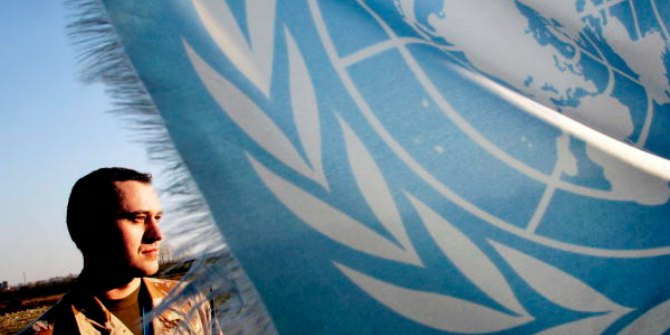Charles Crawford takes a closer look at corruption in international politics and business, and finds an essential read for policy-makers in the new edition of Economic Gangsters.
- Google Books (limited preview)
- Amazon
- Publisher
Economic Gangsters: Corruption, Violence, and the Poverty of Nations. By Raymond Fisman and Edward Miguel. Princeton University Press. January 2010.
 Professors Raymond Fisman and Edward Miguel (Columbia Business School and UC Berkeley respectively) have pooled their knowledge to produce a readable account of the strategic economic damage done in different parts of the world by systemic corruption, not least in the international development aid business: “trillions of dollars were wasted on roads to nowhere or power plants that never lit up a single home. Billions more were stolen.”
Professors Raymond Fisman and Edward Miguel (Columbia Business School and UC Berkeley respectively) have pooled their knowledge to produce a readable account of the strategic economic damage done in different parts of the world by systemic corruption, not least in the international development aid business: “trillions of dollars were wasted on roads to nowhere or power plants that never lit up a single home. Billions more were stolen.”
They are right to point out the problem. So startling is the scale of dishonest manipulation of the world’s money that governments play down the problem for fear of exposing their own impotence and incompetence (see the staggering losses suffered by European taxpayers by VAT carousel fraud and illicit dealings in carbon credits).
Any intelligent politician or policy-maker should read this book. Not to get grainy insights into economic gangsterism, but to ponder Fisman and Miguel’s brisk introduction to the twin agonies of modern policy-making: measurement and causation. We know in general terms that corruption and stupidity aplenty are out there. But what particular bad behaviour is leading to which particularly bad outcomes? Which good behaviour or cleverly targeted incentives might lead to better outcomes?
Do complicated government rules to try to stop corruption inadvertently make it worse? Or are those rules brought in by corrupt politicians precisely to create new opportunities for corruption? Could systematic corruption become a perverse force for stability? Could ‘reform’ create a turbulent market for new gangsterism and chaotic results for the mass of people? This final question is now a hot topic indeed across the Middle East.
Fisman and Miguel offer ingenious if problematic attempts to measure these elusive phenomena. They look at stock exchange prices of major Indonesian corporations close to former President Suharto to try to identify how much money his family might have purloined. They compare parking violations by different countries’ diplomats in New York with global corruption rankings, to try to isolate ‘cultural’ propensities towards corruption. They ask whether increased police salaries in Kenya simply make corrupt police officers richer. They pore over Hong Kong container statistics (2,700 containers per hour move through Hong Kong) to explore how different tariffs on frozen chicken and turkey meat encourage smuggling.
Not surprisingly, the book falls short of giving definitive answers: “there are a dizzying number of plausibly effective policies, but how can we figure out which ones will work in practice?” Fisman and Miguel put faith in ‘randomised program evaluations’, a technique drawn in part from medicine to help identify which treatments work and which do not. But as they acknowledge, it is not easy to do controlled public policy experiments; manifold causal factors are in play, plus politicians are loath to treat different categories of taxpayer differently.
Fisman and Miguel quote one especially ingenious study. 600 villages in Indonesia were each given $6000 of World Bank money to build a local road. One group of villages were told that the results would be audited by the central government. Another group used ‘town-hall meetings’ to empower villagers to monitor the construction. In the third group of villages nothing was done to highlight the corruption problem.
Libertarians, socialists and sentimental development economists alike might expect, or at least hope, that the participatory ‘grass-roots’ approach was best. In fact the threat of central audit was much the most effective. Corruption (as measured by the quality of the road materials) was not eliminated but was at least reduced by over 30%. Mass participation was scarcely better than doing nothing. The results make sense: who wants to be the brave villager publicly confronting the local corrupt chief and accompanying henchpersons? Yet is tough centralised Putin-esque/ Mubarak-ist ‘control’ really likely to be more honest?
In terms of the book’s shortcomings, the passages on climate change and conflict in Africa are too obvious and unconvincing. There was little on how IT might be used to promote transparency and liberate people from corrupt bureaucracy. And there is one painful eggcorn: “The British have found a way to reign in political favour giving while the Italians haven’t”.
Nonetheless, a fascinating and helpful book. The next time you hear a politician talking earnestly about taxpayers’ money, remember that the governing classes around the world have no idea about how best to tackle awesome levels of corruption running to countless billions of dollars a year, and that it might suit a lot of prominent people in politics and business alike to keep it that way.
Charles Crawford is a former British diplomat, serving from 1996-98 as HM Ambassador in Sarajevo and was threatened with expulsion by President Izetbegovic’s officials for briefing UK Foreign Secretary Robin Cook to raise corruption problems when Mr Cook visited Bosnia in 1997.






